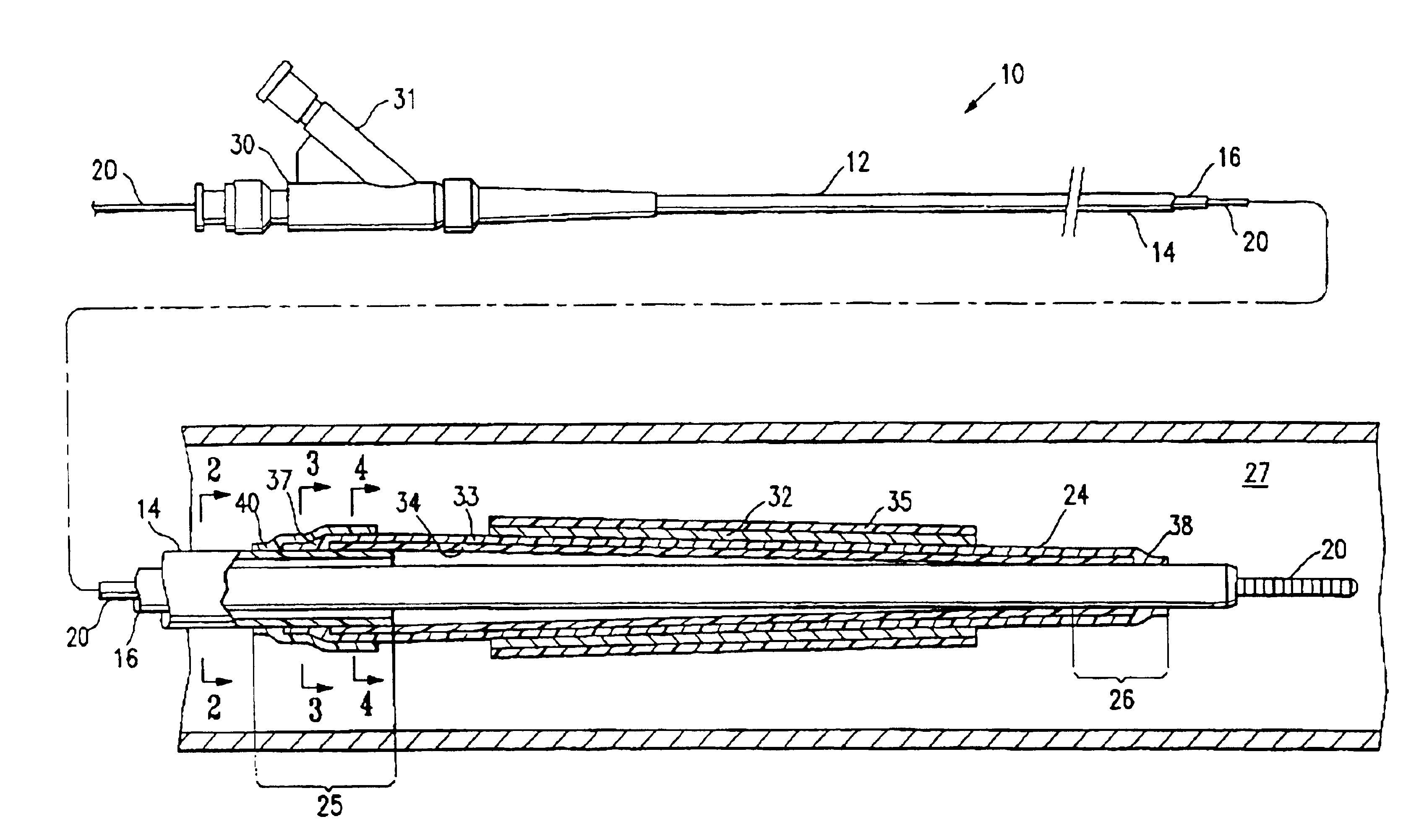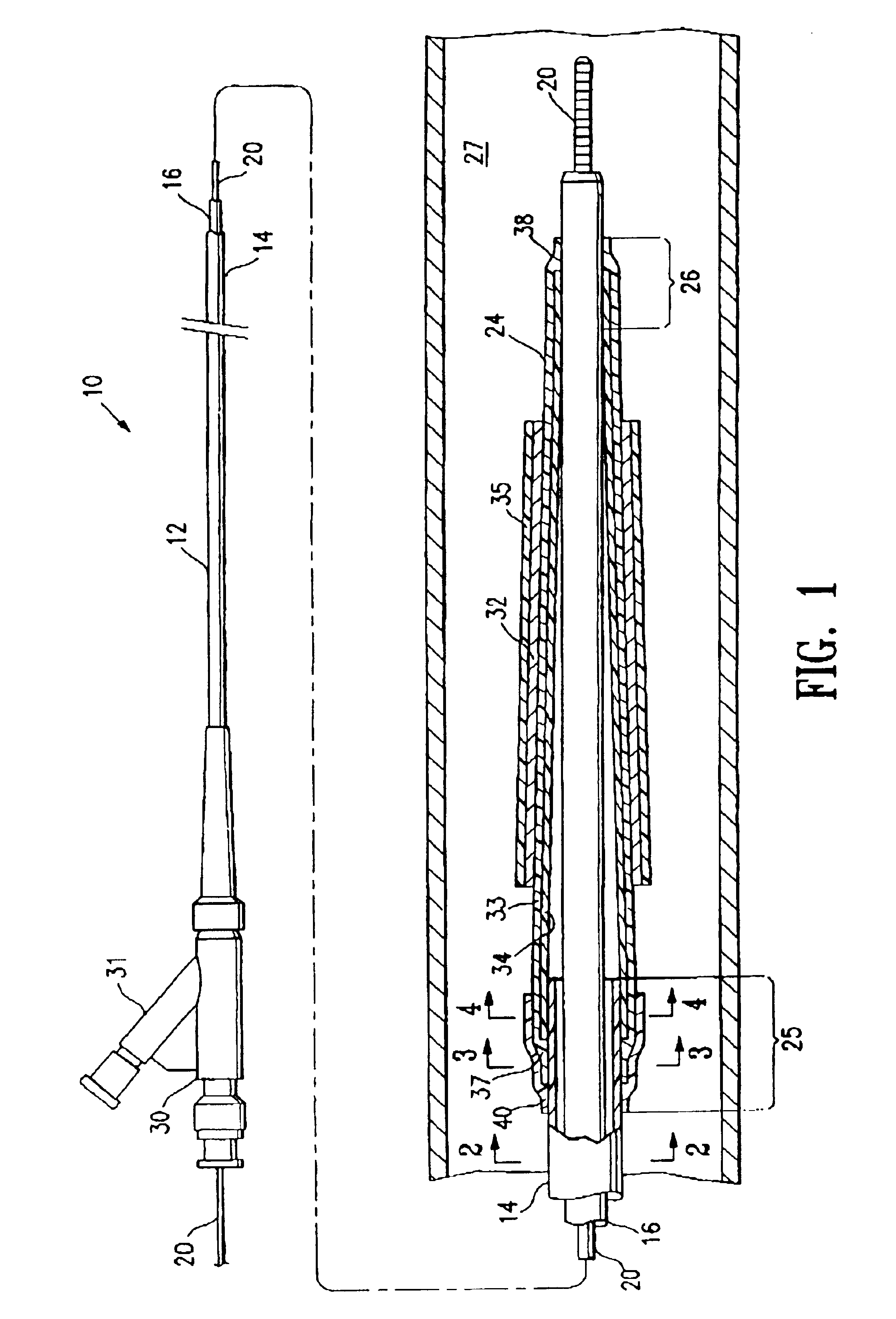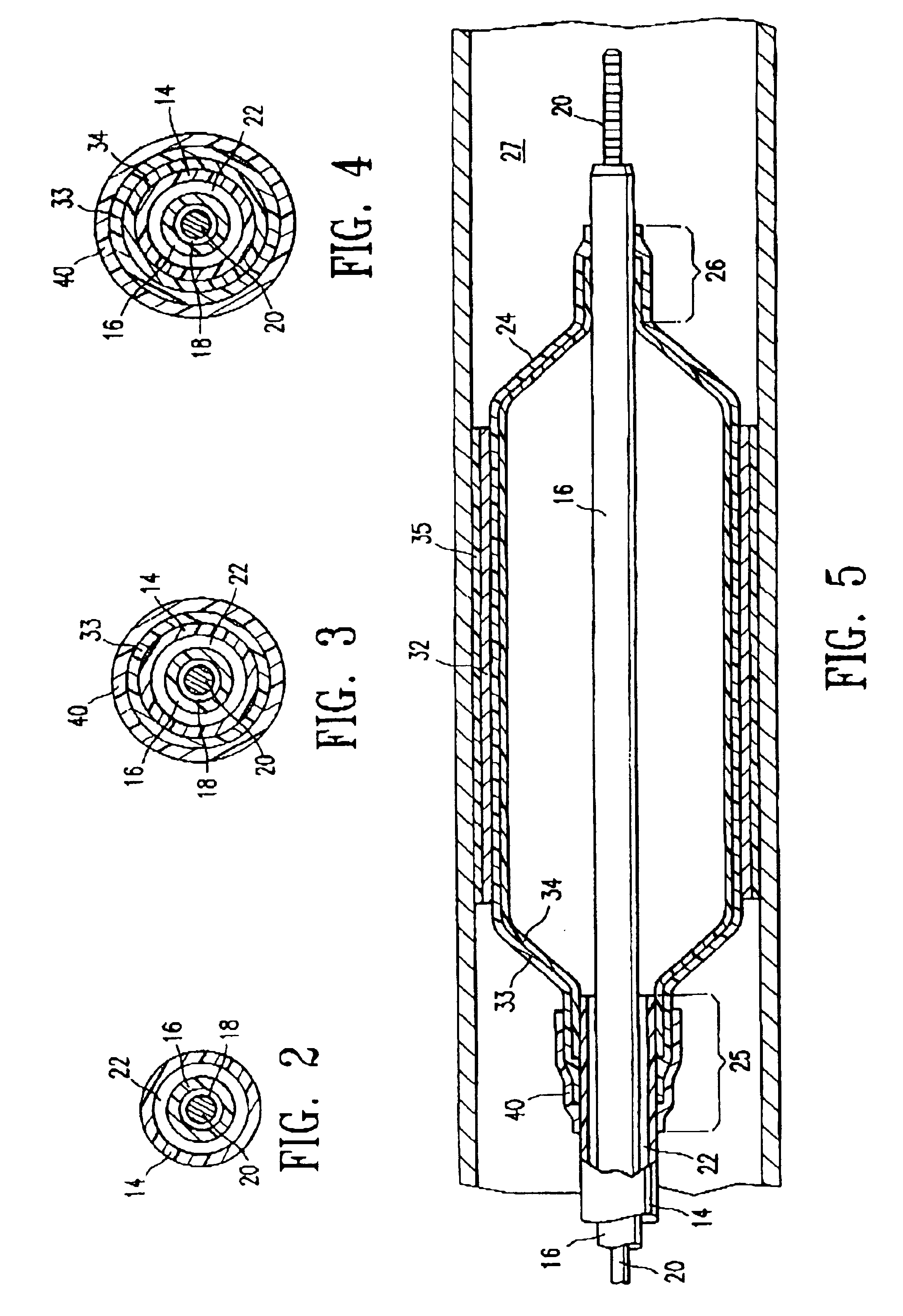Catheter balloon having improved balloon bonding
a catheter and balloon technology, applied in the field of medical devices, can solve the problems of eptfe being difficult to bond to the balloon liner material and/or the catheter shaft, and trauma to the vessel wall, and achieve the effect of improving the strength of the bond and improving the strong bond
- Summary
- Abstract
- Description
- Claims
- Application Information
AI Technical Summary
Benefits of technology
Problems solved by technology
Method used
Image
Examples
Embodiment Construction
[0024]FIG. 1 illustrates an over-the-wire type stent delivery balloon catheter 10 embodying features of the invention. Catheter 10 generally comprises an elongated catheter shaft 12 having an outer tubular member 14 and an inner tubular member 16. Inner tubular member 16 defines a guidewire lumen 18 configured to slidingly receive a guidewire 20, and the coaxial relationship between outer tubular member 14 and inner tubular member 16 defines annular inflation lumen 22, as best shown in FIG. 2 illustrating a transverse cross section of the distal end of the catheter shown in FIG. 1, taken along line 2—2. An inflatable balloon 24 disposed on a distal section of catheter shaft 12 has a proximal skirt section 25 sealingly secured to the distal end of outer tubular member 14 and a distal skirt section 26 sealingly secured to the distal end of inner tubular member 16, so that the balloon interior is in fluid communication with inflation lumen 22. An adapter 30 at the proximal end of cathe...
PUM
| Property | Measurement | Unit |
|---|---|---|
| Fraction | aaaaa | aaaaa |
| Thickness | aaaaa | aaaaa |
| Thickness | aaaaa | aaaaa |
Abstract
Description
Claims
Application Information
 Login to View More
Login to View More - R&D
- Intellectual Property
- Life Sciences
- Materials
- Tech Scout
- Unparalleled Data Quality
- Higher Quality Content
- 60% Fewer Hallucinations
Browse by: Latest US Patents, China's latest patents, Technical Efficacy Thesaurus, Application Domain, Technology Topic, Popular Technical Reports.
© 2025 PatSnap. All rights reserved.Legal|Privacy policy|Modern Slavery Act Transparency Statement|Sitemap|About US| Contact US: help@patsnap.com



